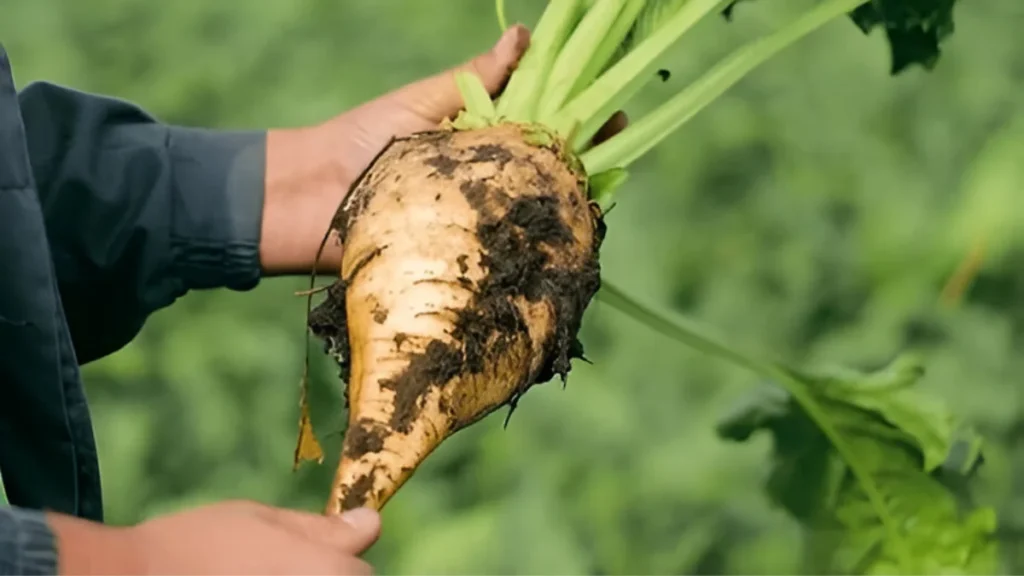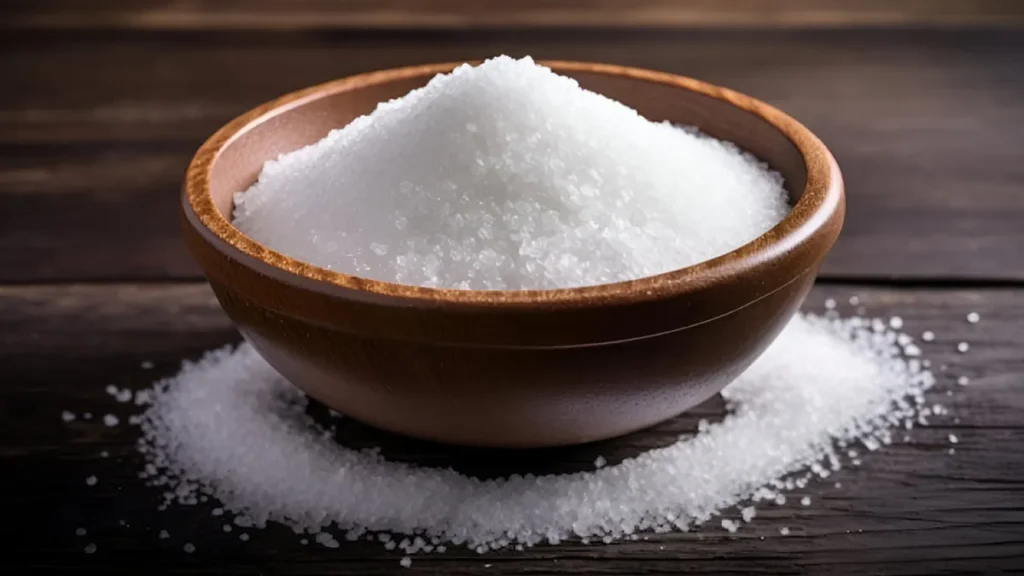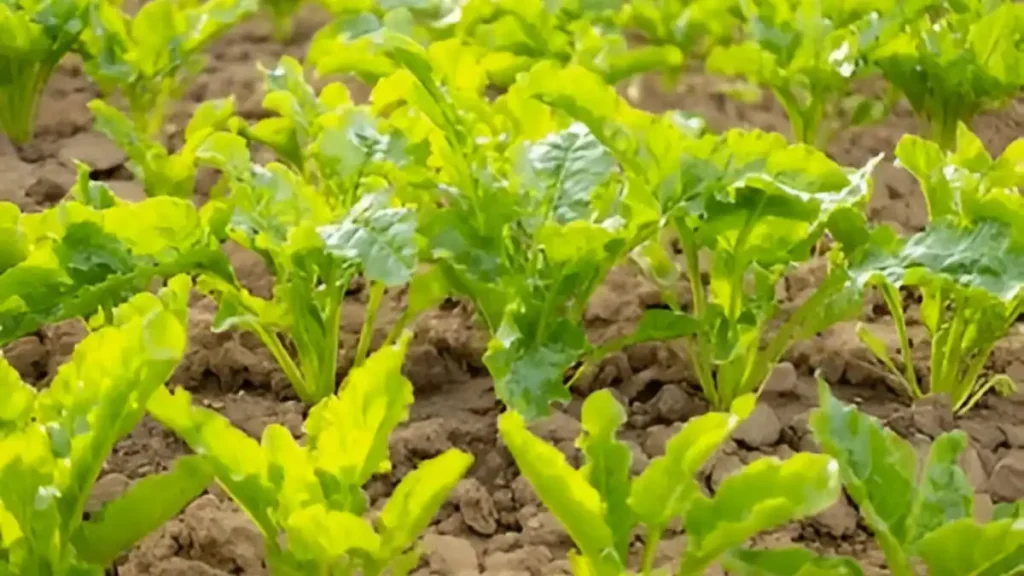Since sugar beets have a high sugar content, they are important to the manufacturing of commercial sugar. However, for those seeking a more hands-on approach to sugar production, cultivating this beet at home provides a rewarding and sustainable alternative. This guide offers a thorough road map for both beginning and seasoned gardeners, delving into the art and science of sugar beet growing for homemade sugar.
Step-by-step instructions for growing sugar beets:
- Select the appropriate Variety: Choose a kind of sugar beet that is appropriate for your soil type and environment. Beta vulgaris and Beta vulgaris subsp. vulgaris are common variations.
- Soil and planting: A sandy loam with sufficient drainage is optimal for sugar beet development. Between 6.0 and 8.0 is their ideal pH range, which is slightly acidic to slightly alkaline. Till the soil and remove any debris, such as weeds and pebbles. After the last frost, the ideal soil temperature for spring planting is about 60°F.
- Planting seeds: Starting at a depth of about 1.5 inches, arrange the seeds in rows eighteen inches apart. Seeds can be planted 1 inch apart at first, then clipped 4-5 inches apart once a few true leaf pairs form.
- Care and upkeep: It requires full sunlight and modest irrigation for soil moisture. They are hardy in temperate zones, so add mulch or partial shade for cooler temperatures.
- Fertilization and weed control: Use a balanced fertilizer that contains potassium, phosphate, and nitrogen by the results of a soil test. Mulch the area surrounding the plants to keep the soil moist and discourage weed growth. To avoid competition for nutrients, perform routine inspections and hand weeding.
- Harvesting: It takes 90–100 days for sugar beets to achieve maturity. Gather them by removing them from the soil and thoroughly cleaning them.

How to make sugar from sugar beets:
- Preparation: Cut off the greens and give the beets a good cleaning after harvesting. To increase the surface area for sugar extraction, chop or shred the beets into tiny cubes.
- Boiling: Put the chopped beets in a big pot and add enough water to cover them. Bring to the boil and boil for around one hour. Strain the beet pulp out of the liquid, saving the liquid with your sugar.
- Reduce the liquid: Return the filtered liquid to the saucepan and cook it until it becomes syrupy, which may take several hours to complete.
- Grinding and drying: After the decreased syrup has dried on trays, it is broken up into bits and ground into granules.
- Production: The recipe suggests producing one pound of sugar for every ten pounds of beets, resulting in a dark brown molasses-like texture.

Conclusion:
To sum up, growing sugar beets for your use can be a sustainable and fulfilling enterprise. This comprehensive guide offers insightful information on every step of the process, from choosing the best variety of sugar beets to harvesting and turning the plants into sugar.
A frequently asked questions:
Q1: What are sugar beets?
A1: Sugar beets, a root vegetable with a high sucrose content, are a valuable source for sugar extraction due to their high concentration.
Q2: What are the nutritional benefits of sugar beets?
A2: These beets are high in fiber, low in calories and fat, and a good source of manganese and folate. They also have modest levels of B6 and C vitamins.
Q3: What are sugar beets used for?
A3: The main purpose of cultivating sugar beet is to harvest sugar. This is then processed and used in a range of culinary and beverage products.
Q4: Where are sugar beets commonly grown?
A4: These beets are primarily grown in temperate regions. particularly Europe, North America, and Asia, due to their ideal soils and climates.




1 Comment
Pingback: Tips for Growing Vegetables Indoors | 15 Surprising Veggies in Pots